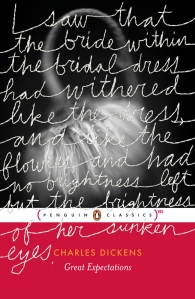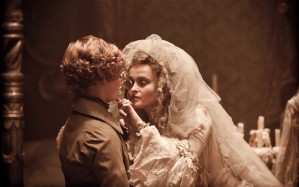By Andrew Jonathan S. Bagaoisan
Riveting stories are always about journeys. Miguel de Cervantes’s story of Don Quixote, considered a seminal work of modern Western literature (and which I have yet to read) sets out the classic plot of a literal expedition and the discoveries its protagonists make on their way from point A to B.
In others, the journey itself is the discovery. But perhaps nowhere else do characters uncover unexpected finds and realizations than in detective stories and science fiction.
Continuing my current reading habit of two genre authors, I went along a journey down two roads. One led to the early 20th century, and the other, millions of years in the past. And like the people on those trails, I was riveted by what I found. And what I found made me want to re-read them to see what I missed the first time.
The Secret of Chimneys
(Agatha Christie, 1925)
 Chimneys is a centuries-old English mansion and, like in other Christie mysteries, the setting of a murder mystery. But this story starts farther down in South Africa, where a chance reunion thrusts two intriguing errands on adventure-loving Anthony Cade.
Chimneys is a centuries-old English mansion and, like in other Christie mysteries, the setting of a murder mystery. But this story starts farther down in South Africa, where a chance reunion thrusts two intriguing errands on adventure-loving Anthony Cade.
First was to deliver to a publisher in London the hand-written memoirs of a count from the fictional nation of Herzoslovakia. The Central European country was fresh from a revolution yet was already stirring for another upheaval. Then, Anthony has to return a stack of racy letters to a Mrs. Virginia Revel.
Both manuscripts are potentially scandalous, but hardly seemed connected. Little did Anthony Cade know that he has signed up for a bigger job than just a delivery. He learns, for one, that the letters and the memoirs are connected to a conspiracy at Chimneys.
Agatha Christie drops the revelations little by little like a trail of bread crumbs. We find that characters are not who they introduce themselves at first. And while the story follows Anthony Cade, even he is not safe from our suspicions of the culprit.
The story’s geopolitical bent introduces us not just to Englishmen and Herzoslovaks, but also to an American and a Frenchman. Even the bit players make lasting impressions. The handful of women, meanwhile, call to mind Agatha Christie’s template for heroines. Some turn out rendering more essential roles.
There are no dragging moments or long episodes that disconnect you from the flow of the story. The mysteries are aplenty, going beyond just a mere murder.
Does Anthony fulfill his two errands? How connected is he to this unrelated business? Who is the murderer? And why the fuss about Chimneys? That’s what we not only discover. But as we can expect from Christie, there’s always a love story somewhere in there.
End of an Era
(Robert J. Sawyer, 1994)
 In this contemporary setting, time travel has become a reality. And the first big jump or “Throwback” to the past takes the travelers way, way into prehistory—the Mesozoic or dinosaur era, some 65 million years ago. It only fitted that scientists were chosen for the ride.
In this contemporary setting, time travel has become a reality. And the first big jump or “Throwback” to the past takes the travelers way, way into prehistory—the Mesozoic or dinosaur era, some 65 million years ago. It only fitted that scientists were chosen for the ride.
They were biologist Brandon Thackeray and geologist Miles “Klicks” Jordan, associates-turned-rivals in both trade and in life. Aside from collecting specimens and documenting their 64-hour stop, they hoped to answer one big mystery—how did the dinosaurs die out?
The scientists explore as far as their feet—and a Jeep they brought along–can take them. They’re not even sure if they dropped into the right period. The Earth they arrived in had lighter gravity, explaining the great heights the dinosaurs grew to. A second moon lit the night. And did those dinosaurs just speak to them?
We read Brandon’s log of the journey, complete with his impressions and frustrations. Yet near the middle, the story reveals another narrative starring the same people in starkly different circumstances. The link between the past and the present grows clear as the story ticks a “countdown” toward Zero Hour.
The unfamiliar reader can get lost in the host of dinosaurs identified throughout the story. But the science behind the possibilities in this novel is compelling and convincing. It’s a blend of various fields–paleontology, astronomy, and physics. The book takes time to explain the mechanics of time travel, the device used, and the
Robert Sawyer also tackles some of science’s more popular assumptions about what caused the mass extinctions at the end of the Mesozoic era. Brandon and Klicks are even on opposite ends of the debate. Will they find out who’s right?
But beyond the mind-tickling prospects, Sawyer weaves personal and soul-searching issues into his tale, letting the less-scientifically-literate relate. The small cast makes life-and-death decisions and faces the complexities of tampering with time (a.k.a. The Butterfly Effect).
Ultimately, Brandon and Klicks find that their expedition has far-reaching effects not just on their lives but even on others they haven’t met.
—————-
*My other reviews of Agatha Christie’s books:
*I also review Sawyer’s “Calculating God”. You can read it here.











